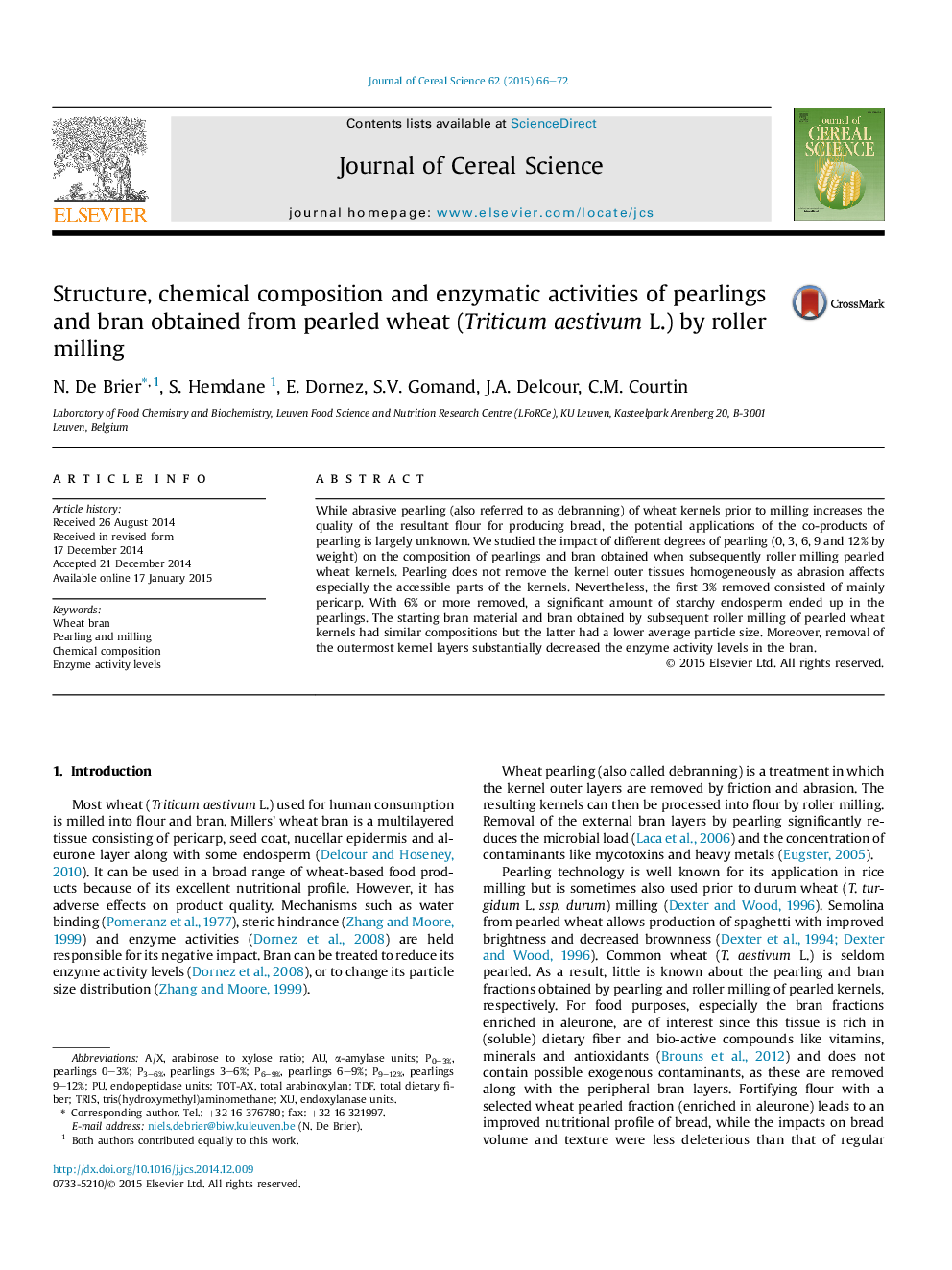| کد مقاله | کد نشریه | سال انتشار | مقاله انگلیسی | نسخه تمام متن |
|---|---|---|---|---|
| 4515725 | 1624900 | 2015 | 7 صفحه PDF | دانلود رایگان |

• Pearling does not remove the kernel outer tissues homogeneously.
• Milling performance and behavior are clearly affected by pearling.
• Pearling yields bran fractions that clearly differ in chemical composition.
• Enzyme activity levels were generally higher in pearlings than in bran products.
• Peripheral layers have very high enzyme activity levels compared to regular bran.
While abrasive pearling (also referred to as debranning) of wheat kernels prior to milling increases the quality of the resultant flour for producing bread, the potential applications of the co-products of pearling is largely unknown. We studied the impact of different degrees of pearling (0, 3, 6, 9 and 12% by weight) on the composition of pearlings and bran obtained when subsequently roller milling pearled wheat kernels. Pearling does not remove the kernel outer tissues homogeneously as abrasion affects especially the accessible parts of the kernels. Nevertheless, the first 3% removed consisted of mainly pericarp. With 6% or more removed, a significant amount of starchy endosperm ended up in the pearlings. The starting bran material and bran obtained by subsequent roller milling of pearled wheat kernels had similar compositions but the latter had a lower average particle size. Moreover, removal of the outermost kernel layers substantially decreased the enzyme activity levels in the bran.
Journal: Journal of Cereal Science - Volume 62, March 2015, Pages 66–72